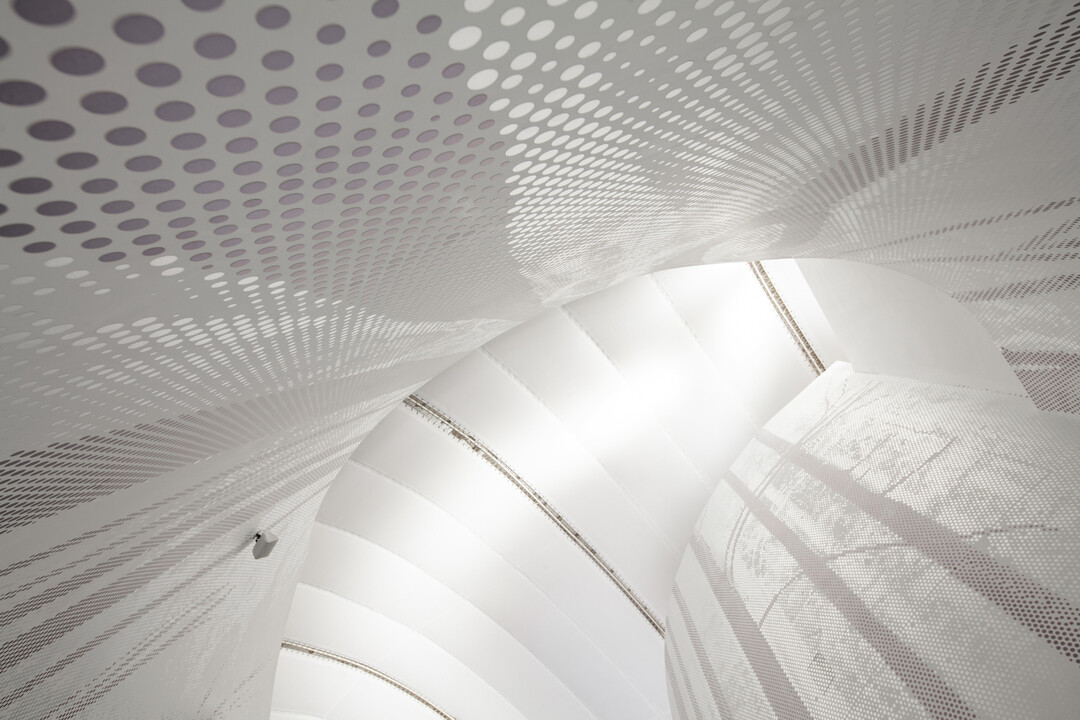
Members Only
Please join as a member and click "Members Only" to read more complete articles and exclusive content.

Please join as a member and click "Members Only" to read more complete articles and exclusive content.
在城市中擁有一座自然住宅是很難得的,窗扮演著重要的角色,將自然景致與生活連結,我們期待的家是能遮風避雨,而不是隔絕自然的美好。這個住宅擁有良好的外部環境,層疊的路樹造就豐厚的綠意,充沛的三面採光能盡情與戶外交流,順應著住宅的特性,讓簡單自然的材料承接綠景與光影。這是尚藝設計俞佳宏總監的家,他想設計給親愛的家人最舒適的居住空間,同時也傳達一種理念——隨性自然的生活享受。
這個住宅是由兩戶合併為一,平面圖的右側為公領域,左側為私領域,拆除了大部分的隔間,拉大空間尺度。客廳、餐廳、外廚區所組成的公共區域是空間中的一大亮點,無須雕飾,也不使用太多壁材,最主要運用兩種材料──萊姆石與生鐵,它們共同的魅力在於樸實的質感,與戶外的自然綠景做呼應。萊姆石有溫暖的白色質感與自然凹凸面,分布於人們常待著的區塊;生鐵看似黑冷,表面會隨著時間產生氧化,記錄這個居所的狀態,尤其客廳後方的三面鐵件量體,穿插一斜面,渲染出空間的層次。白天時有來自戶外的光影相輝映,晚間則有線燈和美感燈具營造舒心的氛圍,讓人能自然鬆心情,使一家人沉浸在相處的時光中。
客廳配置思考有別於一般,不設電視牆,而是另外配置一間視聽室,讓客廳的專注力集中於交流。運用長形臥榻串聯客、餐、廚三個區塊,休憩與用餐區需要不同的座位高度,因此臥榻以高低落符合需求。家具配置十分具有彈性,選用義大利品牌的解構沙發,能隨需求與狀況改變組合,以及可調整長度的餐桌;外廚中島是黑白對比的簡約畫面,滿足待客時泡茶、品酒、輕食等需求,一旁面窗的洗水槽一掃洗滌的枯燥,讓人時刻與自然交流;內廚區的設計是夫妻兩人累積多年使用經驗的成果,在下方有充裕收納量體的條件下,以簡約層板取代厚重的吊櫃,另外,砧板區與洗碗平台貼心設計出高低差,符合不同的使用模式。
平面圖左側的私領域空間為主臥室與兩個孩子的臥房,公領域黑白對比的視覺效果與材料也延續到主臥室,營造深沉的睡眠空間;小孩房的動線會先經過遊戲室才到寢區,分開遊玩與睡眠,此外還設計了小閣樓,多元的房型與動線,是父愛給予的趣味童年。藉由自宅的規畫設計,設計師俞佳宏向人們闡述自然設計,展示另一種生活的型態與思維。